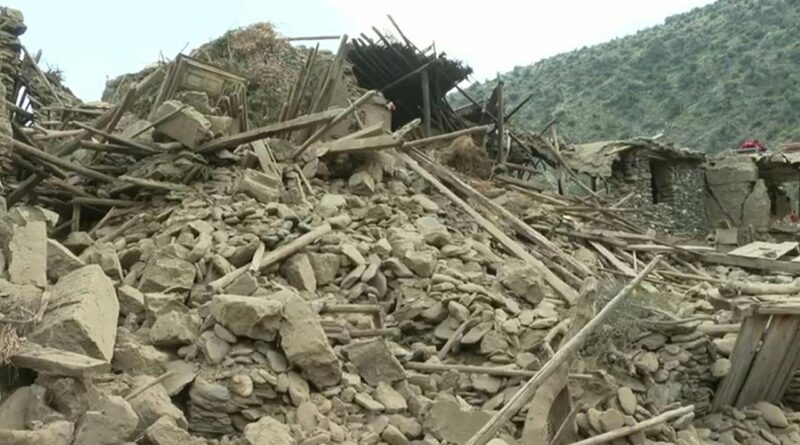The U.S.’s Absence in Afghanistan’s Earthquake Relief Raises Concern
In the aftermath of a devastating earthquake in Afghanistan, which claimed over 2,200 lives and left countless more without shelter, the United States remains noticeably absent in providing immediate aid. The paralysis in aid initiation from the U.S. has spotlighted the void left by the gradual shrinkage of its role as a leader in worldwide disaster relief, accelerated by significant cuts in foreign assistance and the termination of its principal foreign aid agency, the U.S. Agency for International Development.
The closing down of the U.S. Agency for International Development marks a significant turning point in international aid relief. To date, there has been no issuance of a declaration of humanitarian necessity from the U.S. State Department, a critical step to activating U.S. emergency support. Such declarations are typically made within the first 24 hours following a substantial catastrophe.
Despite the prompt internal deliberations on extending disaster assistance to Afghanistan in the wake of the catastrophic event, the U.S.’s aid-suspension policy for the country remains unaltered. The U.S. had been, until recently, the primary benefactor of aid to Afghanistan following the war that spanned two decades and culminated in a disorderly U.S. exit and subsequent Taliban takeover in Kabul in 2021.
In a drastic shift in its policy, the U.S. discontinued all forms of aid to Afghanistan that had amounted to $562 million. This decision sprang from a report by a U.S. watchdog that revealed humanitarian organizations receiving aid from the U.S. had reportedly paid approximately $10.9 million in terms of taxes, duties, and fees to the Taliban.
The Chief of United Nations aid brought attention to the significant impact of the grave earthquake in Afghanistan, highlighting how it has revealed the detrimental effects of reduced resources on important humanitarian work. The previous U.S. administration, led by President Trump, continues to withhold its response to a petition from a humanitarian group for the provision of $105,000 worth of medical supplies sourced from the U.S.
The medical equipment proposed for shipment includes fundamental tools such as stethoscopes, first aid kits, stretchers, and related necessities. These disaster-related provisions are currently in limbo, stowed in storage and awaiting the endorsement from Washington before they can be shipped to provide relief in the aftermath of the earthquake. These items had previously been procured under a U.S. funding grant that is now withdrawn.
Striking a chord on the present situation in Afghanistan, the representative for the U.N. Development Programme in the country emphasized the demolishing blow the earthquake has dealt to basic infrastructure and livelihoods. The country has witnessed overwhelming destruction and is in dire need of rebuilding and aid in the wake of the disaster.
In the meantime, generous donations in the form of funds, goods, and humanitarian services have been received from several countries, demonstrating a global outpouring of support. Nations like Britain, South Korea, Australia, India, Pakistan, Iran, and Turkey have extended their assistance in an attempt to ameliorate the disastrous fallout from the earthquake.
Nevertheless, despite this outpouring of assistance, the needs in Afghanistan continue to outpace the response. The scale of destruction and displacement caused by the earthquake means that much more support is required to effectively provide relief in the short-term and kick-start recovery projects that will help rebuild the country in the longer term.
Afghanistan’s current predicament underscores a broader issue concerning the decline of major global powers taking proactive steps in disaster relief. Historically, nations like the United States took the lead in global assistance programs, something that’s being reconsidered due to various policy changes and periods of financial austerity.
A question now hangs over the international community – who will pick up the mantle and continue the important work in the international aid sphere? With the significant fall in resources, it’s imperative the international community rallies to fill this gap to ensure those most in need aren’t left behind.
The magnitude of a country’s need following a disaster of such a catastrophic scale cannot be underestimated. The international community must not only meet these immediate needs but also build robust support systems to rebuild the country’s shattered infrastructure and re-establish livelihood security.
As conversations continue and global leaders assess their roles and responsibilities in such crises, the necessity for humanitarian aid remains. Despite the shifting policy landscape, it’s crucial that the focus remains on the people most affected by these circumstances – the vulnerable individuals whose lives have been turned upside down.
As Afghanistan grapples with the shockwaves of the earthquake, the global community’s response will shape not only the country’s recovery but also the nature of foreign aid in years to come. The actions taken or not taken today will echo in the policies and response mechanisms of tomorrow.
Digesting this immense catastrophe, it has become clear that improved global cooperation and a redoubling of humanitarian aid efforts are urgently needed. As countries continue to navigate their respective policy waters, the immediate urgency to provide relief to Afghanistan mustn’t be lost in these deliberations.



